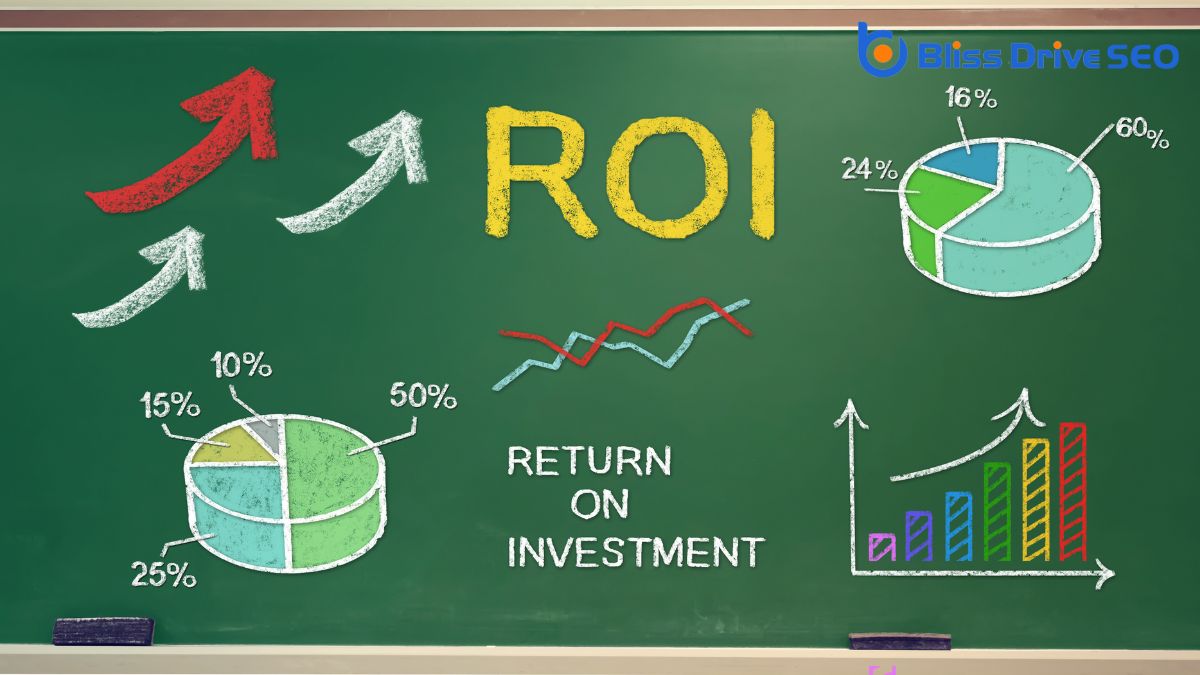Digital Marketing Services
Learn More About Us

The ROI of content marketingA strategic approach focused on creating and distributing valuable, relevant, and consistent content... is all about the value it generates compared to the costs involved. It boosts brand awarenessThe extent to which consumers are familiar with the qualities or image of a particular brand., drives customer engagementThe level of interaction and involvement a customer has with a brand., and ultimately leads to increased sales. You'll measure this through metrics like page views, conversionThe completion of a desired action by a referred user, such as making a purchase or filling out a fo... rates, and customer lifetime value. To maximize ROI, align your content with clear business goals, use multiple channels, and tailor it to your audience. Properly tracking and attributing these efforts can be challenging, but it's essential for understanding true value. By evaluating these aspects, you'll better grasp how content marketing can propel your business forward and enhance your strategy.
When it comes to understanding content marketing ROI, it's all about recognizing the value your content brings to the table compared to the costs involved. You need to evaluate how effectively your content achieves its intended goals, whether that's boosting brand awareness, generating leads, or driving sales. Content marketing isn't just about creating engaging articles or eye-catching videos; it's about ensuring every piece aligns with your business objectives and contributes to your bottom line.
To truly grasp ROI, start by identifying the resources you're investing. This includes time spent on planning, creation, and distribution, as well as any financial costs like software subscriptions or outsourcing services. Once you've got a clear picture of these investments, you can then assess the returns.
Consider the impact of your content on your target audience. Are you seeing increased interaction, higher website traffic, or improved conversion rates? These outcomes reflect the effectiveness of your content strategyA plan for creating, publishing, and managing content to meet business goals..

To effectively measure the ROI of your content marketing efforts, focus on a few key metrics that provide tangible insight into performance. Start with traffic metrics, including page views and unique visitors. These numbers tell you how well your content attracts an audience.
Don't overlook engagement metricsMetrics that measure user interaction with a website, such as time on site and pages per session. like time on page, bounce rateThe percentage of visitors who leave a website after viewing only one page., and social shares. They reveal how compelling your content is to readers.
LeadA potential customer referred by an affiliate who has shown interest in the product or service but h... generation metrics are pivotal, too. Track the number of leads your content generates through forms, downloads, or sign-ups. This helps you see if your content effectively captures interest and drives potential customers into your sales funnelAnother term for conversion funnel, focusing on the steps leading to a purchase..
Conversion metrics, such as conversion rateThe percentage of visitors who complete a desired action, such as making a purchase or filling out a... and cost per conversion, indicate how well your content turns leads into customers.
Revenue metrics, like customer acquisition cost (CAC)The cost associated with acquiring a new customer, including marketing and sales expenses. and customer lifetime value (CLV), offerThe specific product or service being promoted by affiliates. a deeper understanding of financial outcomes. They connect your content efforts to actual sales and long-term value.
Understanding the metrics that measure ROI is only part of the equation; calculating the actual value of your content marketing efforts is where the insights truly come to life. To ascertain the value, you need to link your content marketing activities directly to tangible business outcomes. Start by identifying your core objectives—whether that's generating leads, driving sales, or boosting brand awareness. Each goal requires a different approach to calculating value.
Next, assign a monetary value to each action. For instance, if a lead is worth $50 and your content generates 100 leads, you've created $5,000 in value. This isn't just about guesswork; use historical data and industry benchmarks to make informed estimates. Additionally, factor in cost savings. If your content reduces customer supportServices provided to assist customers before, during, and after a purchase to ensure a positive expe... inquiries, calculate how much you've saved on resources.
Don't forget to take into account the long-term benefits. Content often has a lasting impact, driving traffic and engagement over time. Analyze the lifetime value of your content, not just the immediate returns. By connecting these dots, you'll see a clearer picture of how content marketing contributes to your bottom line, empowering you to make informed decisions moving forward.
Crafting a high-impact content strategy is crucial for maximizing ROI in your marketing efforts. Start by clearly defining your goals. Knowing what you want to achieve lets you align your content with your overall business objectives. Whether it's increasing brand awareness, generating leads, or driving sales, having well-defined goals keeps your strategy focused.
Next, understand your audience. Create detailed buyer personas to tailor your content to their needs and interests. This guarantees you're not just creating content for the sake of it, but delivering real value to your audience, which in turn boosts engagement and conversions.
Leverage multiple channels to distribute your content. Don't just stick to one platform; diversify across social media, blogs, email newsletters, and video. This broadens your reach and increases the chances of your content being seen by the right people.
Additionally, measure your results regularly. Use analyticsThe systematic computational analysis of data or statistics to gain insights and support decision-ma... to assess which content pieces are performing well and why. This allows you to refine your strategy by doubling down on successful tactics and discarding what doesn't work.

Exploring the world of content marketing ROI can feel like a maze with various challenges that often trip up even the most seasoned marketers. You might find yourself grappling with these issues, but don't worry—every challenge has a solution. The first hurdle is tracking ROI accurately. Without a clear method, you could end up with misleading data, making it hard to justify your efforts.
In content marketing, understanding ROI is essential for success. By focusing on key metrics and calculating the value of your efforts, you can clearly see how your strategies pay off. To maximize ROI, continually refine your approach and address common challenges with creative solutions. Remember, content marketing is a dynamic process, so stay adaptable and responsive to changes. With persistence and strategic thinking, you'll reveal the full potential of your content marketing initiatives.
